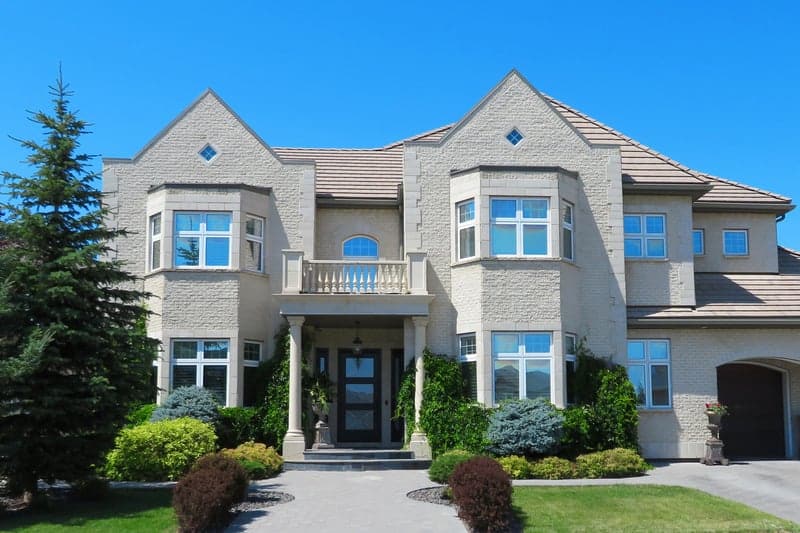The Benefits of Home Window Tinting
In recent years, home window tinting has emerged as a popular and practical upgrade for homeowners. The rise in its popularity is not merely due to aesthetic preferences but also because of its manifold functional benefits. Whether you’re looking to cut down on energy costs, protect your interiors from harmful UV rays, or simply add a layer of privacy, window tinting offers solutions that make it well worth the investment.
Why Home Window Tinting is a Growing Trend
The rise of home window tinting can be attributed to several factors. Firstly, there’s the growing need for energy efficiency. Many homeowners are keen to reduce their carbon footprint and save on utility bills by minimizing the need for air conditioning during hot summer months and retaining heat during the winter. Secondly, the harmful effects of UV rays on health and furnishings have led many to seek protective measures. Prolonged exposure to UV rays can cause skin issues and cataracts, while also fading and deteriorating furniture, flooring, and artwork. Finally, the desire for privacy and an improved home aesthetic has driven the popularity of window tinting. Tinted windows allow for a sense of seclusion without the need for heavy curtains or blinds, and they can give homes a sleek, modern look. Understanding these motivations, including financial savings, health considerations, and aesthetic preferences, will help illustrate why this trend is gaining traction and becoming an essential feature in modern homes.

Understanding the Benefits of Home Window Tinting
- Energy Efficiency and Cost Savings: Home window tinting can significantly reduce energy consumption by keeping your home cooler in the summer and warmer in the winter. Tinted windows reduce heat gain by blocking a substantial amount of the sun’s rays, which means your air conditioning system won’t have to work as hard. Consequently, this leads to noticeable savings on your utility bills. Over time, the reduction in energy costs can make up for the initial investment in window tinting, making it a cost-effective choice for many homeowners.
- UV Protection for Health and Home Furnishings: One of the most compelling reasons to consider home window tinting is the protection it offers against harmful UV rays. Prolonged exposure to UV radiation can lead to skin cancer and other health issues. By blocking up to 99% of UV rays, window tints provide a safer home environment. Additionally, UV rays can cause fading and deterioration of your home furnishings, including carpets, curtains, and furniture. Tinting your windows helps preserve the color and integrity of these items, extending their lifespan and maintaining the beauty of your interior décor.
- Increased Privacy and Security: Privacy is a major concern for many homeowners, especially those living in densely populated areas. Home window filming can enhance your privacy by making it difficult for outsiders to see into your home during the day. This added layer of privacy does not compromise natural light, ensuring your home remains bright and welcoming. Security is another benefit; tinted windows are harder to break, deterring potential intruders and offering greater peace of mind.
- Enhancing the Aesthetic Appeal of Your Home: Window tinting can also contribute to the overall look and feel of your home. With a variety of tints and films available, you can choose a style that complements your home’s exterior and interior design. Whether you prefer a sleek, modern look or a more traditional appearance, there’s a window tint option that will enhance your home’s aesthetic appeal. Furthermore, tinted windows can provide a uniform appearance from the outside, adding to your home’s curb appeal and potentially increasing its market value.
Types of Window Tinting and Their Specific Benefits
Understanding the different types of window tinting can help you make an informed decision about what works best for your home.
- Reflective Window Films: Reflective window films are designed to reflect heat and glare away from your home. These films are excellent for reducing heat gain and improving energy efficiency, making them a popular choice among homeowners looking to lower their energy bills. Additionally, reflective films offer high levels of privacy during the day while still allowing you to enjoy unobstructed outdoor views.
- Privacy Tints: Privacy tints are perfect for areas where you need more seclusion, such as bathrooms, bedrooms, or street-facing windows. These tints obscure the view from the outside without sacrificing natural light, providing you with the privacy you need while keeping your living spaces bright and airy. Privacy tints come in various shades and levels of darkness, allowing you to customize the level of privacy according to your preferences.
- Decorative Films: Decorative films offer a unique way to enhance your home’s aesthetic appeal. Available in a wide range of patterns, colors, and textures, these films can add a touch of elegance or a splash of creativity to your windows. Decorative films can also provide additional privacy and UV protection, making them a versatile choice for any room in your home.

The Installation Process: What to Expect
Installing window tints in your home is a relatively straightforward process, but knowing what to anticipate can help ensure a smooth and satisfactory experience. The first step typically involves a consultation with a professional installer who will assess your needs, recommend suitable tinting options, and provide an estimate. Once you’ve selected the desired film, the installation process can begin.
- Preparation: Before the actual installation, the windows need to be thoroughly cleaned to remove any dirt, dust, or debris. This ensures that the film adheres properly and there are no imperfections or bubbles. It’s also advisable for homeowners to clear any furniture or obstacles near the windows to provide easy access for the installers.
- Application: The application process varies slightly depending on the type of window film you’ve chosen. Generally, a water and soap solution is sprayed onto the window surface to help position the film correctly. The film is then carefully applied, adjusted to fit the window’s contours, and smoothed out to eliminate any air bubbles or wrinkles. The installers will use specialized tools like squeegees and trimming knives to achieve a perfect finish.
- Drying Time: After the window film has been applied, it needs some time to cure and fully adhere to the glass. This drying period can vary from a few days to a few weeks, depending on the type of film used and environmental conditions such as humidity and temperature. During this time, it’s important to avoid cleaning the windows or applying any pressure to the newly installed film.
- Final Inspection: Once the film has fully dried, a final inspection will be conducted to ensure the installation meets the highest standards of quality. The installers will check for any imperfections and make necessary adjustments. They’ll also provide care instructions to help you maintain the tint and maximize its lifespan.
By understanding each step of the installation process, you can be better prepared and feel more confident in your decision to invest in home window tinting.
Maintaining and Cleaning Your Tinted Windows
Proper maintenance and cleaning are crucial to preserve the benefits of your tinted windows and ensure they remain in top condition for years to come. Here are some key tips and best practices to help you care for your tinted windows.
Regular Cleaning Tips
Right after window tint installation, it’s essential to let the tint cure properly. Avoid cleaning the windows or applying any pressure during the drying period, which typically ranges from a few days to a few weeks. Consult your installer for the specific drying time for the film used on your windows.
- Use Mild Cleaners: When cleaning your tinted windows, opt for a mild, non-abrasive cleaning solution. Avoid using ammonia-based products as they can deteriorate the film over time. A mixture of water and a few drops of dish soap works well.
- Gentle Tools: Use soft, non-scratch cleaning materials like a microfiber cloth or a soft sponge. Avoid rough materials such as paper towels, which can cause scratches.
- Technique: Spray the cleaning solution onto the cloth rather than directly onto the window to prevent excess moisture from seeping into the window edges and potentially lifting the tint. Gently wipe the window in a circular motion, then use a dry microfiber cloth to buff the surface to a clear finish.
Avoiding Common Mistakes
- Harsh Chemicals: Steer clear of abrasive or acidic cleaners that can damage the tint over time.
- Scraping Tools: Never use sharp or abrasive tools to remove debris or stubborn spots.
- Excess Moisture: Be mindful of using too much water during cleaning, as excessive moisture can affect the integrity of the film.

Long-Term Care
Inspect the windows periodically for any signs of wear or damage. If you notice any peeling, bubbling, or discoloration, contact a professional to assess and address the issue. Following these maintenance tips will help extend the life of your window tints, keeping them effective and aesthetically pleasing for years to come.
Sun Guard Tint
https://www.google.com/maps?cid=5789725123746519054
7879 S 1530 W #400, West Jordan, UT 84088, United States
(801) 657-9260
https://sunguardtint.com/